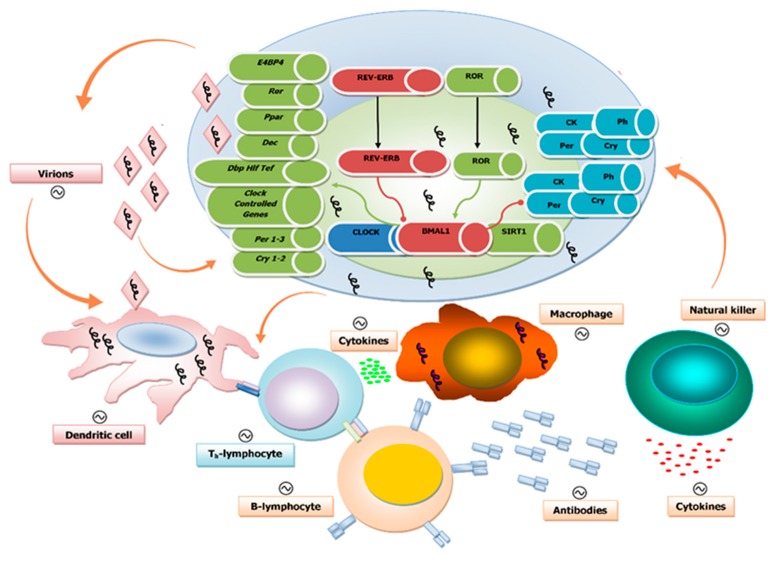Figure 1.
Schematic illustration of the interplay between the biological clock, virus replication, and the immune system at the cellular level: The components of the molecular clockwork are depicted within the cell, with green arrows indicating activation and red arrows indicating inhibition. The presence of viral genomes is indicated by squiggles. Below the cell are elements of the immune response. The orange arrows indicate interactions among virions, biological clocks, and immune competent cells. The interaction of virions and their nucleic acid core with these two players impacts viral replication and rhythmic patterns of host–hosted molecular trade off. The immune system with its innate and adaptive arms provides shielding against viral infections with a number of molecular factors and effectors, such as dendritic cells, T and B cells, macrophages, and natural killer cells. These are engaged to hold up and hinder virus replication and dissemination through the secretion of cytokines and the production of specific antibodies. The components and, ultimately, the complex function of the immune system are rhythmically driven by the biological clock and, in turn, influence the function of the molecular clockwork. Viral particles impact the interplay between immune and circadian systems.

